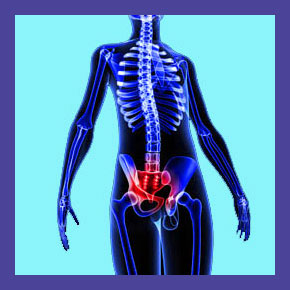
Stabbing lower back pain is an agonizing symptom experienced by many patients. Stabbing pain can stop anyone in their tracks and bring the strongest patient to their knees instantly. Why is this type of penetrating pain so horrific to deal with? Is it the actual pain itself or the fear that it induces in its victims? What can be done to cope with this type of misery, particularly in patients with recurrent episodes of stabbing pain?
As a person with a long and terrible history of low back pain, I completely empathize with those of you who are experiencing stabbing pain in the lower back. This was an ordeal that I also faced for years, in what should have been the best times of my young adult life.
This discussion focuses on explaining the significance of stabbing lumbar back pain. We will investigate the possible causes of this type of suffering, as well as what can be done to minimize the torture while the pain endures.
Stabbing Lower Back Pain Explained
Stabbing pain describes focal points of deep, intense suffering in the low back region. The pain might be located directly over the spine itself or to either or both sides of the vertebral column. All of these location-specific expressions are relatively commonly experienced by patients.
Stabbing pain is virtually always linked to movement, particularly sudden movements of the body, such as bending, twisting, jumping, sneezing or coughing. Usually the pain stabs deeply upon the movement being executed and may or may not continue stabbing afterwards for any number of times. When the stabbing pain ceases, a burning soreness often sets in of varying intensities, causing patients to feel as if they injured some structure in their back. When the stabbing continues, patients often go into a panic, since every movement might exacerbate the acute presentation of pain, driving many patients into bed to rest and hope for the end of their agony soon.
Sources of Stabbing Back Pain
Stabbing pain is surprisingly not an indication of any particular origin of symptoms. In fact, patients have reported severe stabbing lower back pain in association with all manner of diagnoses on occasion, including completely idiopathic expressions of suffering.
When scientific logic is applied, stabbing pain in the lower back is far more of an expected consequence of some diagnosed conditions, more than others. Clinical experience clearly shows that most complaints of stabbing back pain are related to muscular and not spinal issues. Most of these patient profiles are idiopathic and are likely to be related to acute ischemia of the muscles as part of a mindbody syndrome. In other cases, muscular strain might be the underlying cause when strenuous work precedes pain. Just remember that the circumstances of onset might not actually be causative, but may be nothing more than a trigger mechanism for pain to commence. We observe this often in clinical practice.
Many people believe that stabbing back pain is an indicator of a herniated disc. We have never seen any evidence of this, although we have worked with patients who did have disc pain that initially began as an acute expression. It is certainly possible to spontaneous traumatic herniation or rupture could produce a deep, stabbing pain, but given the indisputable fact that discs do not have any nerve endings, this occurrence seems unlikely.
Severe stabbing pain seems unlikely to occur with most common facet joint pain diagnoses, since the nerves are small and typically can not generate the types of strong pain signals experienced.
Stabbing pain may be an expression of another underlying problem, such as central spinal stenosis or mechanical arthritic dysfunction of the spine. One of the major causes we have observed is experienced in association with severe cases of lumbar spondylolisthesis, often of grade 4 classification.
Stabbing Lower Back Pain Coping Techniques
For patients who experience a stabbing pain followed by soreness, it is crucial to overcome the fear and begin to move around soon as possible. Lying in bed for days will not prevent resolve the condition and might enact detrimental consequences on overall health. Clinical experience and research science both support the idea that back pain sufferers should try to mobilize their bodies gently, even when they still have pain.
Patients with enduring stabbing pain should try to determine what factors, if any, are exacerbating their suffering. This information can be used for activity avoidance in the short-term and to help care providers to narrow down the possible causes of the symptoms in the longer term if the pain does not resolve organically.
Patients are not advised to utilize drug therapies if at all possible, but instead to utilize productive coping strategies, such as meditation, exercise, heat, ice, massage, chiropractic, and the many effective techniques that are involved in pain coaching. Oral and injectable drugs create harmful health conditions and will certainly not provide any lasting relief from pain.
If the agony continues, be certain to see your doctor for professional medical evaluation. Just be cautious, since many cases of stabbing low back pain are misattributed to incidental structural abnormalities in the spine, even when the pain is clearly present in the postural muscles.
Lower Back Pain > Lumbar Back Pain > Stabbing Lower Back Pain





